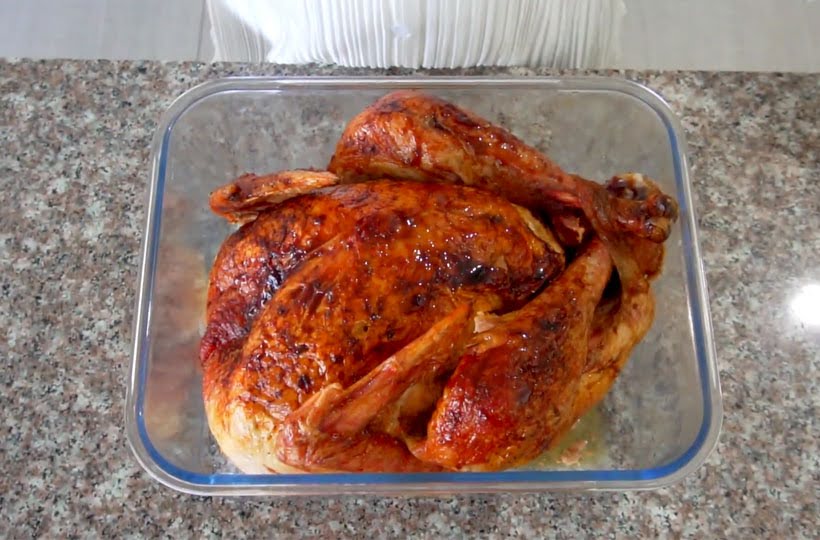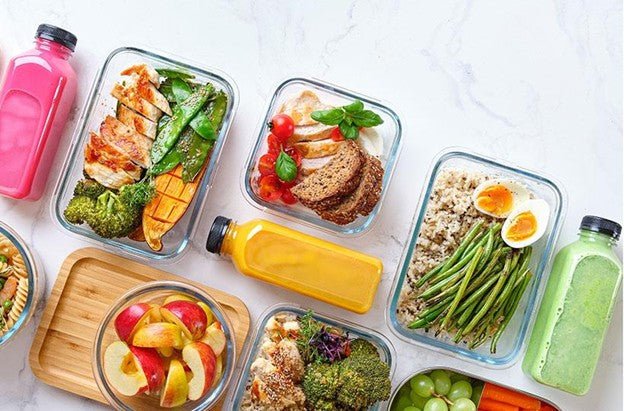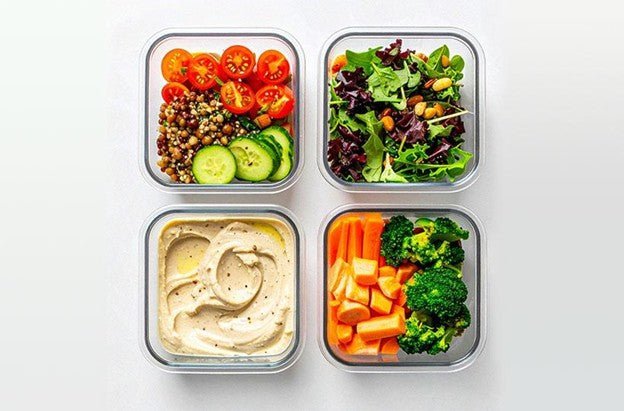Is it Safe to Microwave Glass? A Busy Cook’s Guide to Reheating Safely

Have you ever faced a situation in a hurry to reheat last night’s lasagna, so you grab a glass container. Then you hesitate, wondering: Can you microwave glass without risking a kitchen disaster? Good news for cooks who are in a hurry: most glass is perfectly safe to microwave if the label is “microwave safe.”
Going forward you will get all your answers about how to identify safe containers, how to avoid glass shattering catastrophe, plus which glass meal prep containers are the smartest and safest solution for meal prep. Let us simplify your kitchen life!
The other day, I took an old glass jar to heat my soup, saying this to myself, “Glass is glass, right?” A terrible mistake: the glass cracked and I wasted my lunch break on the cleanup. That is the lesson I learned the hard way that not every glass is microwavable and you MUST be cautious when reheating food in glass containers.
Can you microwave glass?
You can certainly and confidently microwave glass only if it is "microwave safe." It is made from durable materials such as borosilicate or tempered glass which can endure and bear the heat of the microwave without shattering. Microwave safe glass will not shatter if done correctly. Ordinary glass such as drinking glasses can however shatter due to heat stress. Razab is an example along with Pyrex which both utilize this type of glass, ideal for heating up your meal prep containers.
Unless you label it you are playing dice. Standard glass such as drinking glasses or generic jars is not designed to go in the microwave and can shatter or ruin your microwave. Use the safer variety instead which offers glass durability!
But if you want to dig deeper into this science then you must check our blog Why glass is better for safe food storage and Can You Put Glass in the Freezer?

The Best Non-Toxic Food Storage Containers for Your Kitchen
- Razab 6500ML Extra Large Glass Container With Locking Lid and Handle $51.99 $42.99
- Razab 1860ML Glass Set - Set of 2 Pc $45.99 $39.99
- Razab 3300ML Glass Container Set $39.99 $33.99
- Razab 30 PC Glass Meal Prep Containers $68.99 $54.99
- Razab Glass Loaf Pan Containers - Set Of 2 $51.99 $29.99
Types of Glass That Can and Cannot Be Microwaved
Glass is available in various types when it comes to their material and therefore folks, not all are microwave friendly. Here is the breakdown of some of those types:
-
Borosilicate Glass: The glass superhero is strong and microwaveable. Razab meal prep containers and Pyrex, the newer version, utilize this material in their making.
-
Tempered Glass: Durable and normally microwave safe, commonly in bowls for the kitchen. Verify the label when buying.
-
Regular Glass: Consider wine glasses or vintage jars. These are unacceptable and may shatter with heat.
-
Ornamental Glass: Glass with metallic coatings or patterns may ignite or emit toxins. Avoid using it in the microwave!
Now the question is, is the Pyrex microwave safe? Well, the answer is that most Pyrex is okay, particularly borosilicate or tempered Pyrex. Simply check for the microwave safe label.
How to Determine Microwave-Safe Glass?
Not sure whether your glass is microwave safe? See below some general rules of thumb:
1. Inspect the bottom: Search for a “microwave safe” marking or wavy-line icon. It should normally be imprinted on the bottom.
2. Look at the Packaging: The box or site will indicate if it is microwave-safe
3. Check Your Microwave Manual: Your microwave’s guide lists safe materials.
4. Test Carefully: Fill the glass with water and microwave for 1 minute. If the glass stays cool and the water heats it is likely safe.
No label or information? Skip it and move to the next item in the isle to prevent a kitchen accident.
👉 Read our full Guide: Can You Put Glass in the Freezer? Safety Hack to Freeze Without Fear

Risks of Microwaving the Wrong Glass
The incorrect glass can transform your speedy meal into a headache which can turn your quick meal prep to further time taking chaos. Here is what may occur:
• Shattering or Cracking: Heat shock or thermal stress breaks up the non-microwave safe glass, leaving you to deal with the mess.
• Toxins: Painted or decorative glass may transfer chemicals to your food, which isn't good for health-oriented cooks.
• Microwave Oven Damage: Metal designs may short circuit, frying your microwave, hence physical and financial damage.
Use microwave safe and food safe glass such as Razab’s containers to keep the meals secure and the microwave happy and safe.
Guidelines for Safe Microwaving
Ready to reheat that meal prep? Here are some helpful hints:
-
Heat food for 1-2 minute bursts, stirring to distribute the heat.
-
Utilize a microwave safe cover (such as Razab’s airtight lids but with a vent gap for steam).
-
Do not place hot glass on a cold surface or pour cold water onto it, it may crack.
-
Inspect for cracks or chips in your glass since the broken portions shatter more readily.
Extra tip for the health conscious folks:
Glass does not absorb chemicals or smells like other plastics, preserving your food pure and fresh.

Glass vs. Plastic: Why Glass?
Glass vs Plastic: Which is Safer for Microwaving? Here is a rapid rundown:
• Glass: BPA free, eco friendly, does not stain or smell, safe for high heat if labeled microwave safe.
• Plastic: Melts, leaches chemicals (older containers), not safe for health if not made up of BPA-free and takes on food smells.
For health conscious, busy cooks like us, glass like Razab’s containers is a no-brainer, safer for you, keeps food fresher.

How much heat can a glass container tolerate and how to check it?
Certain glass containers such as Razab meal prep containers or even some Pyrex dishes can go up to 350°F in the oven but not everything is capable of tolerating heat. Look for an “oven safe” label. Ordinary glass is going to crack at the high oven temperature so don't risk it.
Which products will never disappoint you?
For meal preppers, Razab meal prep containers are a necessity. Since they are made from borosilicate glass they are microwave and oven safe and BPA free featuring airtight lids that preserve freshness. They are ideal for batch cooking healthier meals such as quinoa bowls or casseroles of veggies. Other solid options include Pyrex storage sets and Anchor Hocking bowls.
Some queries concerning glass in the microwave
1. Can a glass crack or explode in the microwave?
Glass can indeed break inside the microwave if it is not microwave safe. The reason is thermal and heat shock. Not every glass can withstand heat above a certain temperature. That is, when you put hot boiling water in the glass it will break if it is not microwave friendly. Ordinary glass cannot go in the oven. Oven safe glass, such as Razab or certain Pyrex containers can be safely put in the oven. Check for an oven-safe label.
2. Is Pyrex microwave safe?
The majority of Pyrex, including tempered glass or borosilicate, is microwave safe. Look for the “microwave safe” mark while purchasing.
3. How long can you microwave glass?
The microwave safe glass can accommodate up to 3 minutes at once. It is recommended to heat in short intervals to prevent problems.
4. Is all Tupperware microwaves safe?
Generally, no, Tupperware should be checked too for "microwave-safe" mark. Only then is it acceptable. Look at the bottom and steer clear of old plastics.
Choose wisely to be safe
Glass microwaving is a busy chef’s best friend, provided that you have got “microwave-safe” containers like Razab’s glass food containers. Read the labels, heed our advice, and you will have healthy meals reheating like a pro in no time.







Leave a comment